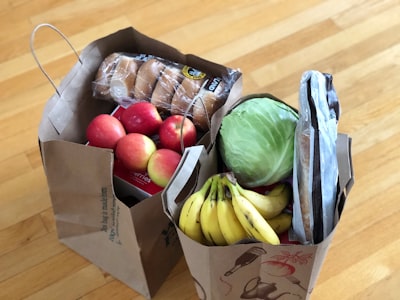The widespread use of bags in daily life, particularly for shopping, has significant environmental, economic, and social implications. Among the most common options are plastic bags, paper bags, and reusable bags, each of which offers distinct advantages and disadvantages. As concerns over environmental sustainability intensify, the debate surrounding the most suitable bagging option has gained prominence.
Plastic bags, once hailed for their convenience and low cost, are now at the center of environmental scrutiny due to their long decomposition times and contribution to pollution. Paper bags, often seen as a more environmentally friendly alternative, come with their own set of challenges, including higher resource consumption during production. Reusable bags, meanwhile, are promoted as the most sustainable choice, but their environmental benefits depend heavily on the frequency and duration of their use.
This article reviews the environmental impact of these three types of bags and examines any changes since the initiative to ban plastic bags began several years ago. This case study examines the environmental impacts of using reusable bags compared to single-use plastic bags, considering factors such as resource consumption, greenhouse gas emissions, and waste generation.
Background
Plastic bags, introduced in the 1970s, quickly became ubiquitous due to their convenience and low cost. However, as their use increased, so did the environmental problems associated with them. Plastic bags became a major contributor to litter, clogging waterways, harming wildlife, and contributing to the growing issue of ocean pollution. The Great Pacific Garbage Patch, a massive collection of floating plastic debris in the Pacific Ocean, became a stark symbol of the plastic pollution crisis.
Public pressure and environmental advocacy groups began to push for action, leading to the implementation of plastic bag bans in various regions. The movement gained momentum in the early 2000s, with countries like Bangladesh, the first to implement a nationwide ban in 2002, citing flooding caused by clogged drainage systems as a driving factor. Other countries and cities followed suit, motivated by the environmental damage caused by plastic bags and the desire to reduce their carbon footprint.
This case study aims to analyze the environmental impact, economic costs, and societal implications of plastic bags compared to paper and reusable bags. By analyzing factors such as material composition, production processes, usage patterns, and disposal methods, this paper aims to provide a comprehensive understanding of the trade-offs involved in selecting one bag type over another. Through this comparison, the study will offer insights into which bag option may be the most sustainable and practical for both consumers and the environment in the long term.
Methodology
The case study reviews existing research, including life cycle assessments (LCAs), scientific articles, and reports from environmental organizations. Key metrics evaluated include:
- Resource Consumption: Materials and energy required for production.
- Greenhouse Gas Emissions: Emissions generated throughout the lifecycle.
- Waste Generation: Disposal impacts and biodegradability.
Findings
Resource Consumption
- Plastic Bags:
- Made from polyethylene, derived from non-renewable petroleum.
- Production is energy-intensive but less so compared to some reusable bags.
- Lightweight and require less material per bag.
- For every ton of plastic bags produced, approximately 1.8 tons of oil is consumed.
- Paper Bags:
- Paper bags are made from wood pulp, a renewable resource
- resource-intensive, requiring about four times as much water as a plastic bag.
- deforestation, and chemical treatments are involved in production
- biodegradable and easy to recycle or compost.
- Reusable Bags:
- Made from various materials (cotton, polypropylene, jute).
- Cotton bags have high resource needs, especially water and energy.
- Polypropylene bags are less resource-intensive than cotton but more than plastic.
Pollution and Greenhouse Gas Emissions
- Plastic Bags:
- Plastic bags can take hundreds of years to decompose, contributing significantly to land and marine pollution. Wildlife often mistake plastic bags for food, leading to ingestion, entanglement, and death.
- Lower emissions per bag due to less material and energy use.
- Carbon footprint of a single plastic bag is around 1.58 kg CO2-equivalent per 1,000 bags.
- Significant emissions if incinerated or when degrading anaerobically in landfills.
- Paper Bags:
- The production process for paper bags generates more pollutants (such as air and water emissions) than that of plastic bags.
- Paper bags are also heavier, requiring more resources to transport.
- Carbon footprint of a paper bag is higher than that of a plastic bag, with estimates ranging from 3.3 to 3.8 kg CO2-equivalent per bag (depends on source and type of paper).
- Reusable Bags:
- The environmental impact varies by material.
- Cotton bags can contribute to pesticide pollution if not produced organically
- Generate less waste over time since they are designed for repeated use.
- The carbon footprint of reusable bags is higher per unit compared to single-use plastic or paper bags.
- Cotton bags, can have a carbon footprint as high as 272 kg CO2-equivalent per bag
- Emissions decrease relative to plastic bags with increased usage.

Cotton bags need to be used 131 times, and polypropylene bags 11 times to break even with plastic bags in terms of emissions.
Waste Generation
- Plastic Bags:
- Major source of environmental pollution.
- Take hundreds of years to decompose, breaking into microplastics.
- Recycling rates are low due to contamination and processing issues.
- They often end up in landfills or as litter, where they pose long-term environmental hazards.

- Paper Bags:
- Paper bags decompose much faster than plastic bags and are more likely to be recycled.
- Heavier weight and greater resource use in production reduce the overall environmental benefit of their biodegradability.
- Reusable Bags:
- Less waste generated with frequent reuse.
- End-of-life disposal varies; some materials are biodegradable or recyclable.
- Cotton bags, though biodegradable, take a long time to decompose.
- Reusable bags reduce the need for single-use bags, thereby decreasing waste generation.
- Environmental benefit is only realized if the bags are used many times.
Case Findings
Reusable bags offer significant environmental benefits when used frequently. For example, a Life Cycle Assessment (LCA) study conducted by the UK Environment Agency in 2011 concluded that reusable polypropylene bags have a lower environmental impact after around 26 reuses compared to single-use plastic and paper bags. However, the study also emphasized that the environmental benefits of reusable bags are contingent on their long-term use and proper disposal.
Discussion
Advantages and Disadvantages
- Plastic Bags:
- Advantages: Low cost, lightweight, and convenient.
- Disadvantages: Significant pollution, wildlife hazards, low recycling rates.
- Paper Bags:
- Advantages: biodegradable, easier to recycle
- Disadvantages: Higher carbon footprint and resource use, heavier to transport
- Reusable Bags:
- Advantages: Reduce waste and pollution, lower environmental impact with frequent use.
- Disadvantages: Higher initial resource use, more expensive, require behavior change.
Recommendations
- Plastic Bags: Encourage the reuse of plastic bags to minimize their environmental impact. Improve recycling infrastructure and public awareness to reduce plastic waste.
- Paper Bags: Promote the use of paper bags only in situations where plastic or reusable bags are impractical, and encourage the reuse and recycling of paper bags.
- Reusable Bags: Advocate for the widespread adoption of reusable bags, particularly those made from less resource-intensive materials like recycled polypropylene. Public education on the importance of reusing these bags is critical to maximizing their environmental benefits.
Impact Reduction Strategies
- Policy and Regulation: Bans or levies on plastic bags to encourage reusable alternatives.
- Consumer Behavior: Education and incentives for using reusable bags.
- Innovation: Development of more sustainable materials for both single-use and reusable bags.
Consumer Impact
You can start reducing your impact by bringing your own reusable shopping bags and produce bags to the store. Whether you prefer sturdy canvas totes or lightweight nylon bags, there are plenty of options available most supermarkets now offer some type of branded reusable bag that you can purchase at a discounted rate. Keep a few reusable bags in your car or by the door so you never forget them when you head out to shop.
My favorite are jute tote bags and their are some affordable options that you can order online. The Creative Green Life Box Shape Tote Grocery Bags are by far the most durable and well constructed bags I’ve yet to see and use. I keep a few of these in the car for my weekend grocery shopping needs. When I’m traveling in NYC, commuting, or picking up groceries in my local neighborhood

I prefer a jute tote bag like the ones you can get from Muji; however, an alternative would be these stylish and durable reusable bags from BeeGreen. They are a sustainable, eco-friendly reusable bag that is very durable. They can easily hold several heavy items such as a box of laundry detergent and a bottle of fabric softener.
Conclusion
While reusable bags have a higher initial environmental impact, their long-term benefits outweigh those of plastic bags if used frequently. A combination of regulatory measures, consumer education, and innovation in materials can enhance the sustainability of both bag types. The shift towards reusable bags, supported by appropriate policies, can significantly mitigate the environmental issues associated with single-use plastics.
References
- Environmental Protection Agency (EPA) – Life Cycle Analysis of Reusable and Single-use Bags.
- World Wildlife Fund (WWF) – Plastic Bag Pollution and Alternatives.
- Journal of Environmental Science – Comparative Study on the Environmental Impact of Plastic and Reusable Bags.
- National Geographic – The Journey of a Plastic Bag: From Production to Pollution.
- Ecosona – The Impact of Reusable Tote Bags on the Environment
- Journal of Engineered Fibers and Fabrics – Eco-Impact of Plastic and Paper Shopping Bags
- Columbia Climate School – Plastic, Paper or Cotton: Which Shopping Bag is Best?
- Emergen Research – Paper Bags vs. Plastic Bags: A Sustainable Packaging Revolution



